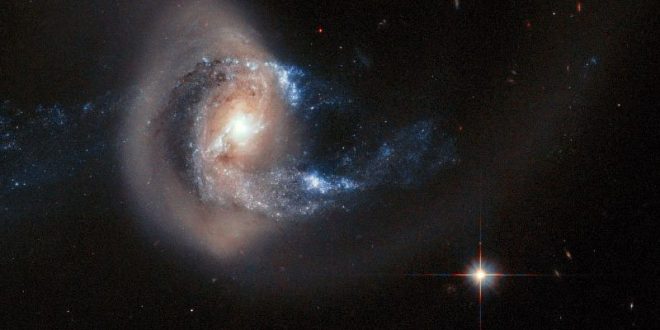The X-ray emissions were discovered by chance beyond the Milky Way and no one really knows what is causing them.
A team of astronomers have now have observed not one, but two extraordinary objects whose behavior defies explanation.
Jimmy Irwin from the University of Alabama and colleagues from the US, Canada and China trawled through years of data gathered by telescopes and found two sources of flares – one that flashed once and the other, five times – near different galaxies.
And although the nature of these X-ray sources is unknown, Irwin and colleagues write in a paper in Nature that they seem to be in population of old stars but are unlike any known object in the Milky Way galaxy.
The search began after two brief but bright X-ray flares were spotted near the galaxy NGC 4697 in 2003 and 2007. They reached maximum luminosity in a matter of seconds and took around an hour to fade away.
Irwin and his crew wondered: have telescopes captured similar flares before but we’ve not recognised them?
So they pored over archived data from the Chandra and XMM-Newton telescopes, which pick up X-rays. And they were in luck.
The first source they spotted was a single bright flash on 14 February 2003 near the elliptical galaxy NGC 4636, around 40 million light-years distant.
The second source flared five times – three times in 2007 and once each in 2099 and 2014. This one seemed to be near the elliptical galaxy NGC 5128, also known as Centaurus A, around 13 million light-years away.
Each flare arose in less than a minute and faded within an hour. So what’s behind these explosions?
The multiple flaring behaviour of the source near Centaurus A rules out self-destructing sources such as supernovae – the death throes of stars.
X-ray pulsars – highly magnetised, rotating neutron stars – emit bright flashes of light. But they’re believed to be young – and not likely found in old stellar populations, which appear to be where the mystery X-ray flare sources reside.
What about matter falling onto a neutron star? This could explain the irregularity of the flares, but the only neutron star to exhibit similar flares, called GRO J1744−28 or the Bursting Pulsar, blasted X-rays around four to five orders of magnitude fainter than these newly discovered flares.
Irwin and colleagues postulate black holes could be behind the flare sources.
In an accompanying News and Views article, Sergio Campana from the Italian National Institute of Astrophysics agrees, writing, “All of these observations seem to suggest the presence of a black hole.”
If so, there are at least two explanations.
The first, also mentioned by Irwin and colleagues, is a black hole of intermediate mass – between 100 and 1,000 times the mass of the sun – is at the centre of each source which emits hour-long flares. Why, though, is yet to be determined.
The second scenario involves black holes with smaller mass, but whose X-ray blasts are beamed in Earth’s direction.
As is often the case, he adds, the mystery may well be solved with more observations. “Now that we know these strange objects are out there, they will remain on the watch list and more examples will be searched for.”
Agencies/Canadajournal
 Canada Journal – News of the World Articles and videos to bring you the biggest Canadian news stories from across the country every day
Canada Journal – News of the World Articles and videos to bring you the biggest Canadian news stories from across the country every day




Interesting article, though it states “The second source flared five times – three times in 2007 and once each in 2099 and 2014.” I suspect the flare in 2099 may be a typo.